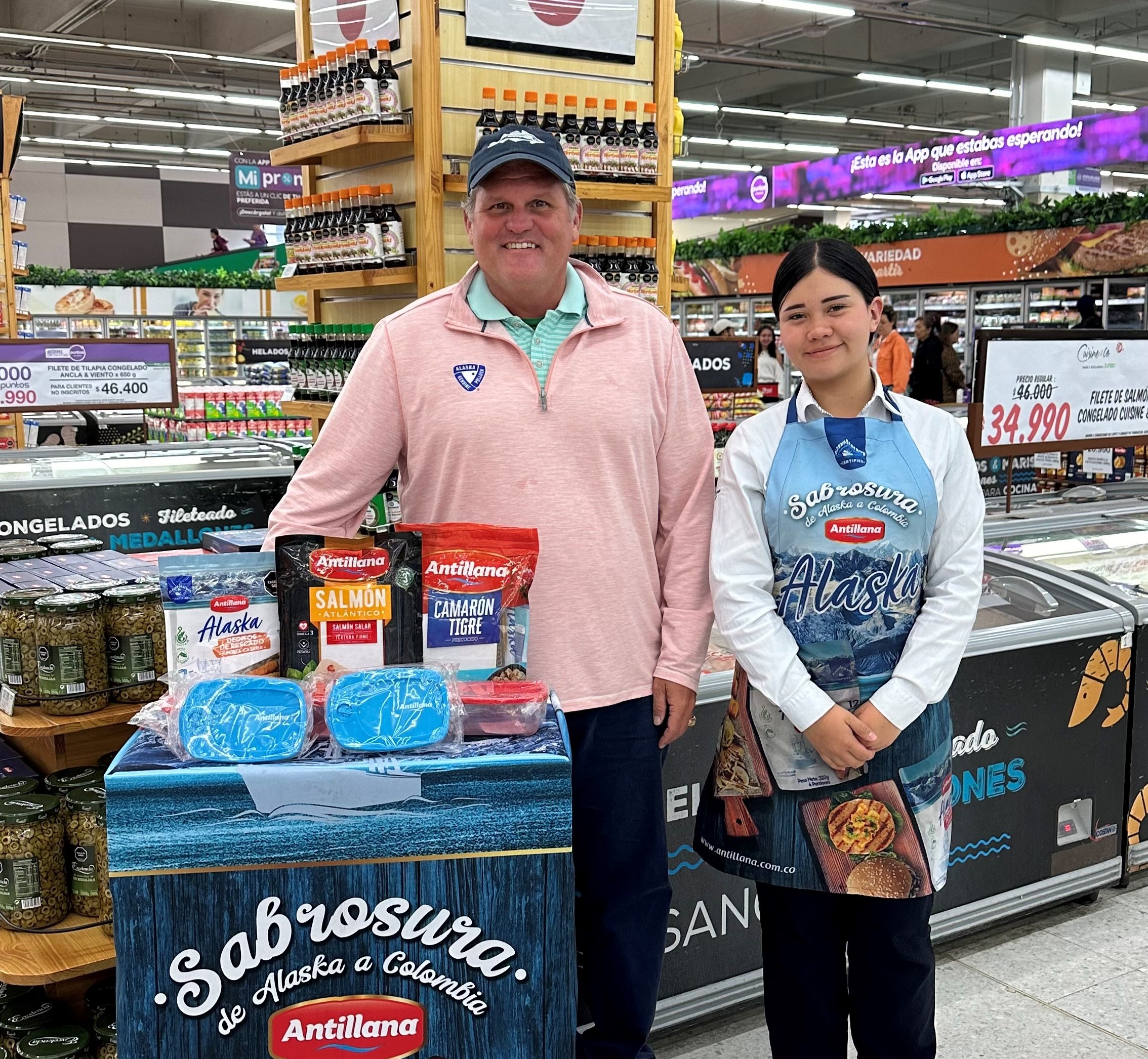Craig Morris , August 26, 2024
Putting Yourself in the Shoes of Your Consumer

On a recent trade mission to Colombia, which was hosted by the U.S. Department of Agriculture, Foreign Agricultural Service (FAS) and was championed by U.S. Under-Secretary for Trade, Alexis Taylor, I had an epiphany: if we truly want to expand the reach and presence of Wild Alaska Pollock abroad, we have to stop putting our product into the forms we want it in, and instead focus on the product forms that our consumers want it in. Put simply, we have to put ourselves in the shoes of our consumers, in each individual market, and position Wild Alaska Pollock products in the way that connects to them.
Take for example, the most popular form for Wild Alaska Pollock here in the U.S.: battered and breaded. As I toured the grocery stores and markets in Colombia with one of our Association of Genuine Alaska Pollock Producers (GAPP) Partnership Program participants, Antillana, who was gracious enough to play host and tour-guide to me in Colombia I realized that there was a dearth of battered and breaded products in the freezer aisle. Contrasting sharply with our domestic frozen food cases, I didn’t see many fish sticks, frozen fish patties—or (and I hate to bring up a competitor protein here…but I must for sake of this argument) even chicken nuggets or tenders.
As Antillana shared with me, battered and breaded products just aren’t something that Colombian consumers gravitate to. So, food importers don’t routinely push those products and local protein manufacturers don’t produce them.
While battered and breaded seafood—and chicken, for that matter—might not be the consumer’s cup of tea in Colombia, what is growing in popularity is sushi, particularly as a dine-out option. For lunch with my gracious hosts, we visited Todo Wok, a popular sushi chain that after just a couple of years has more than 20 locations throughout Bógota. Antillana provides their surimi seafood—or as it’s called in Spanish—palmito de congrejo y pescado—for countless surimi rolls and menu items and, even at a time which I would consider a “late lunch” around 2:00pm, the restaurant was packed with people and all the surrounding tables had at least one roll with the surimi seafood (from what I was able to spy from my seat).
It appears that surimi seafood, made with Wild Alaska Pollock, of course, could be our ticket to growing our market in Colombia in a way that meets Colombian consumers where they are. Certainly, if the menu items containing surimi are popular at dine-out establishments, there could be huge opportunities for retail and quick-serve applications as well…surimi on the go, anyone?
Another potential opportunity for Wild Alaska Pollock could definitely be petfood. Clearing customs in Bógota was an interesting experience as there were dogs absolutely everywhere. And, before you laugh, no I’m not talking “working” dogs employed by Customs and Border Protection—I’m talking pets. Everyone was there to pick up their relatives with their favorite furry friend in tow. It was certainly interesting to observe. Turns out, according to the U.S. embassy staff who briefed our delegation, during covid, pet ownership in Colombia skyrocketed: now, more than 80% of families have a pet—either a dog or a cat.
If Colombian consumers are anything like our consumers here in the U.S. they no doubt will want to treat their four-legged family member to the best food money can buy—which we know is the pet food that contains healthy and sustainable Wild Alaska Pollock. So, pet food manufacturers, take note—there’s a growing market in Colombia for high-quality pet food, and we’re eager to work with you to make more of that food with Wild Alaska Pollock for that specific market.
Then there’s fillet. While the Colombian consumer might not want it battered or breaded, there is a growing fish consumption in Colombia and elsewhere in South America that needs to be met. What better way to feed that need than with pure, Wild-caught, sustainable, nutritious and delicious Wild Alaska Pollock? We have to determine how best to portion and deliver these products, but we know how to market them, because again, we’ll be meeting consumers where they are and delivering the products they want.
It was an illuminating visit to the U.S. largest export market in South America and a fruitful meeting with our distinguished partner in the region: Antillana, who are doing amazing things to market Wild Alaska Pollock and put it into new forms and products—exactly the goals of our Partnership Program. As we get ready to announce our next round of partners in September, it’s an opportune moment to reflect on the cardinal rule of marketing: walk a mile in your consumers’ shoes and meet them on their journey.
That’s what we need to do in Colombia and in new and emerging markets for Wild Alaska Pollock around the world.

